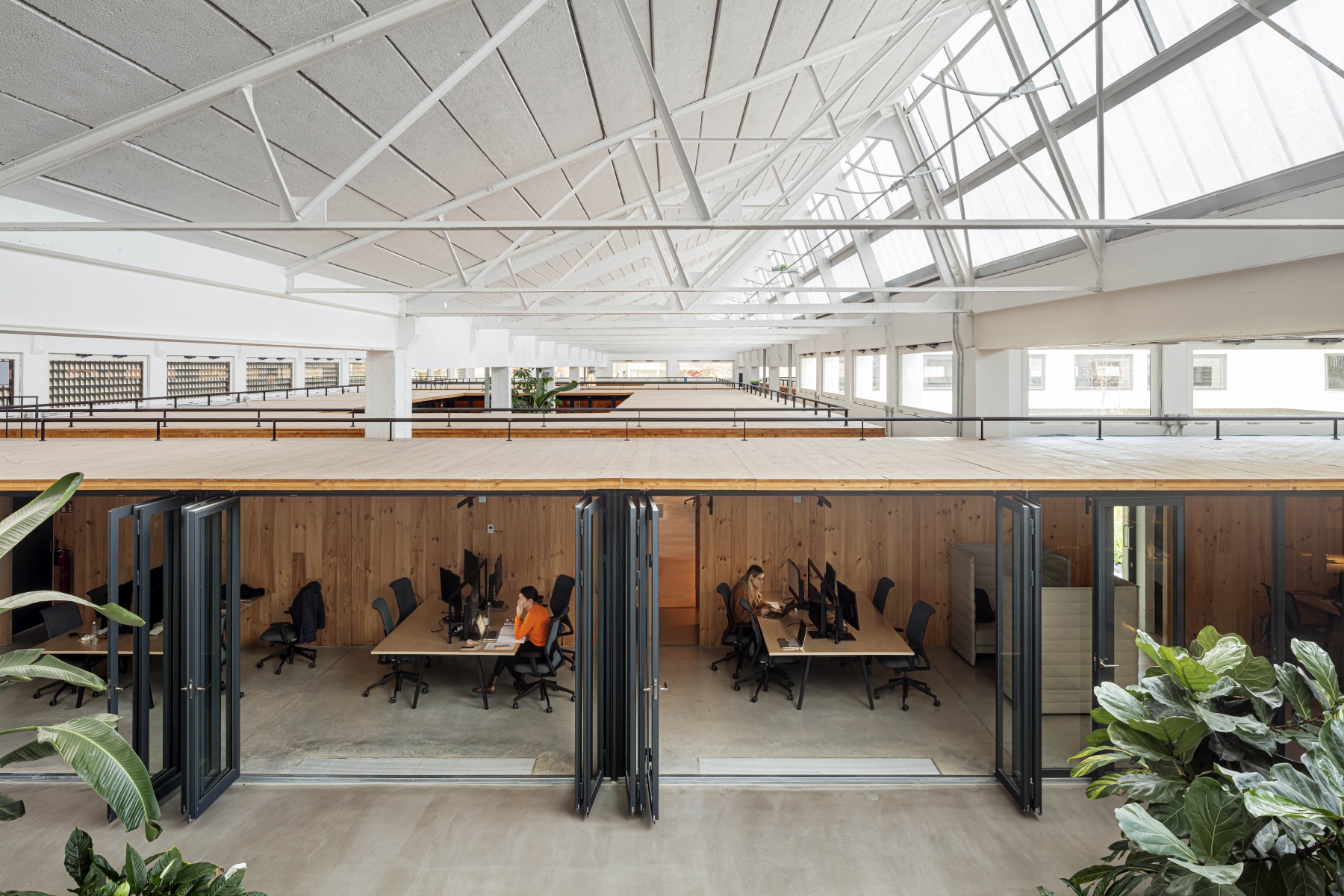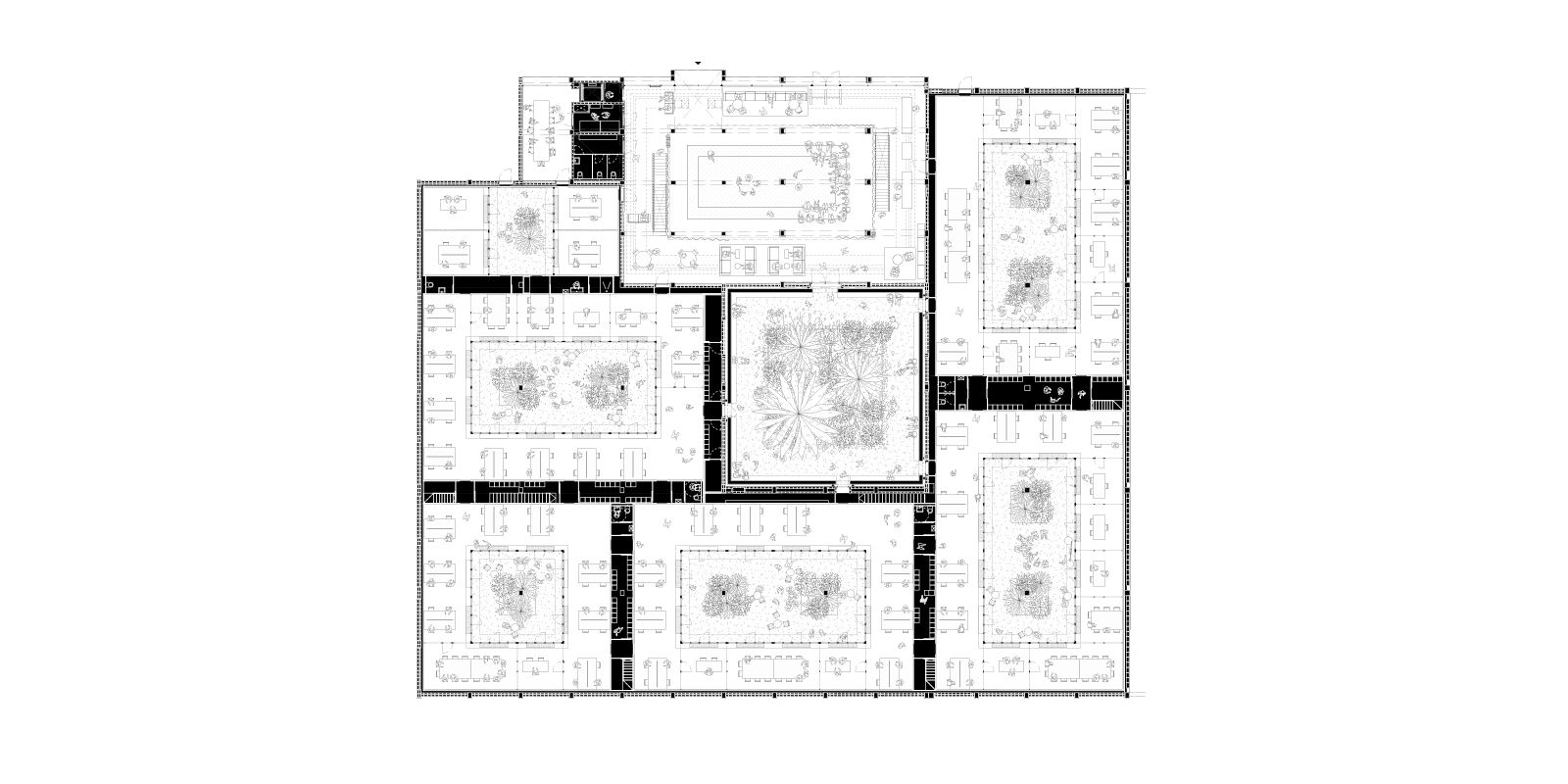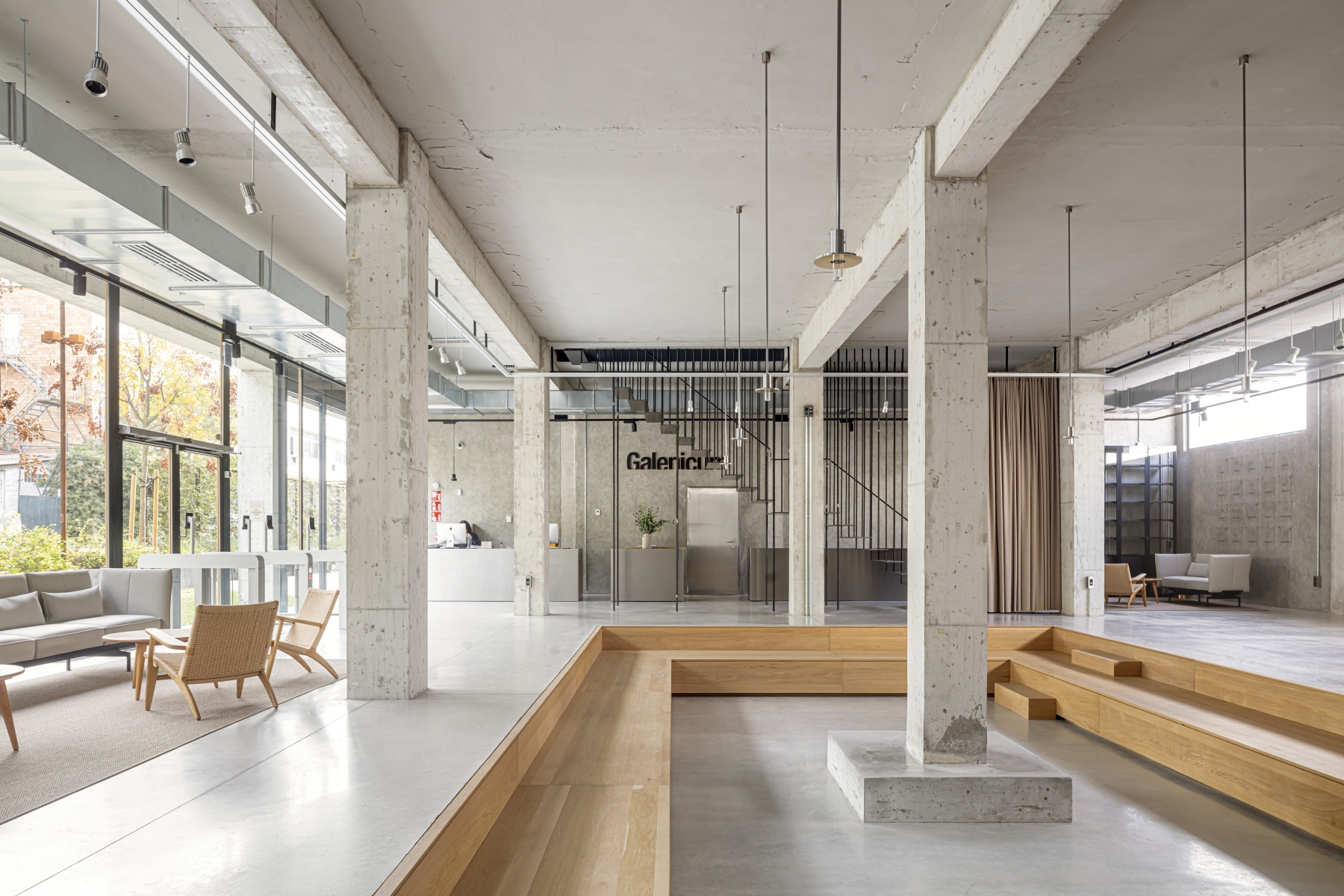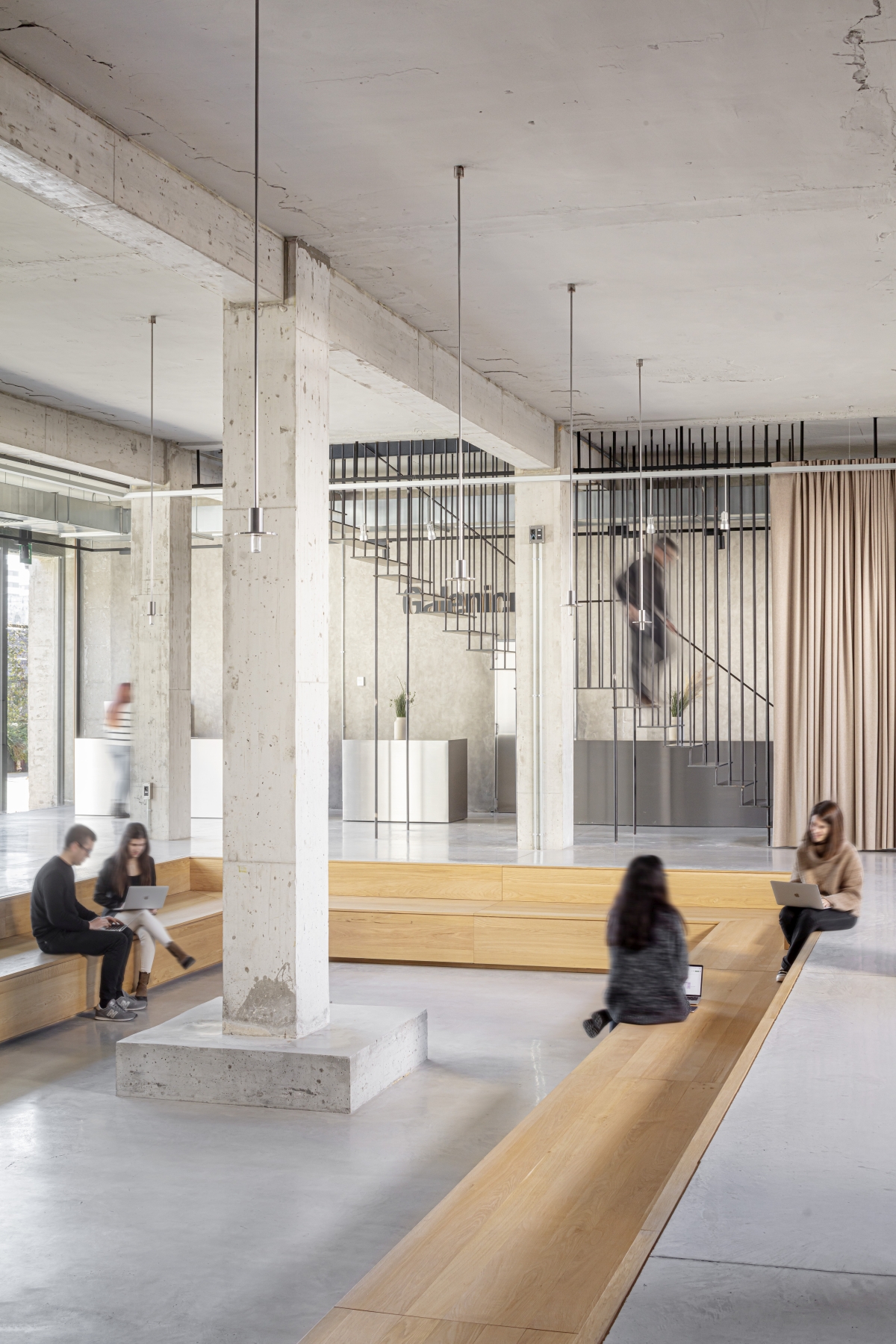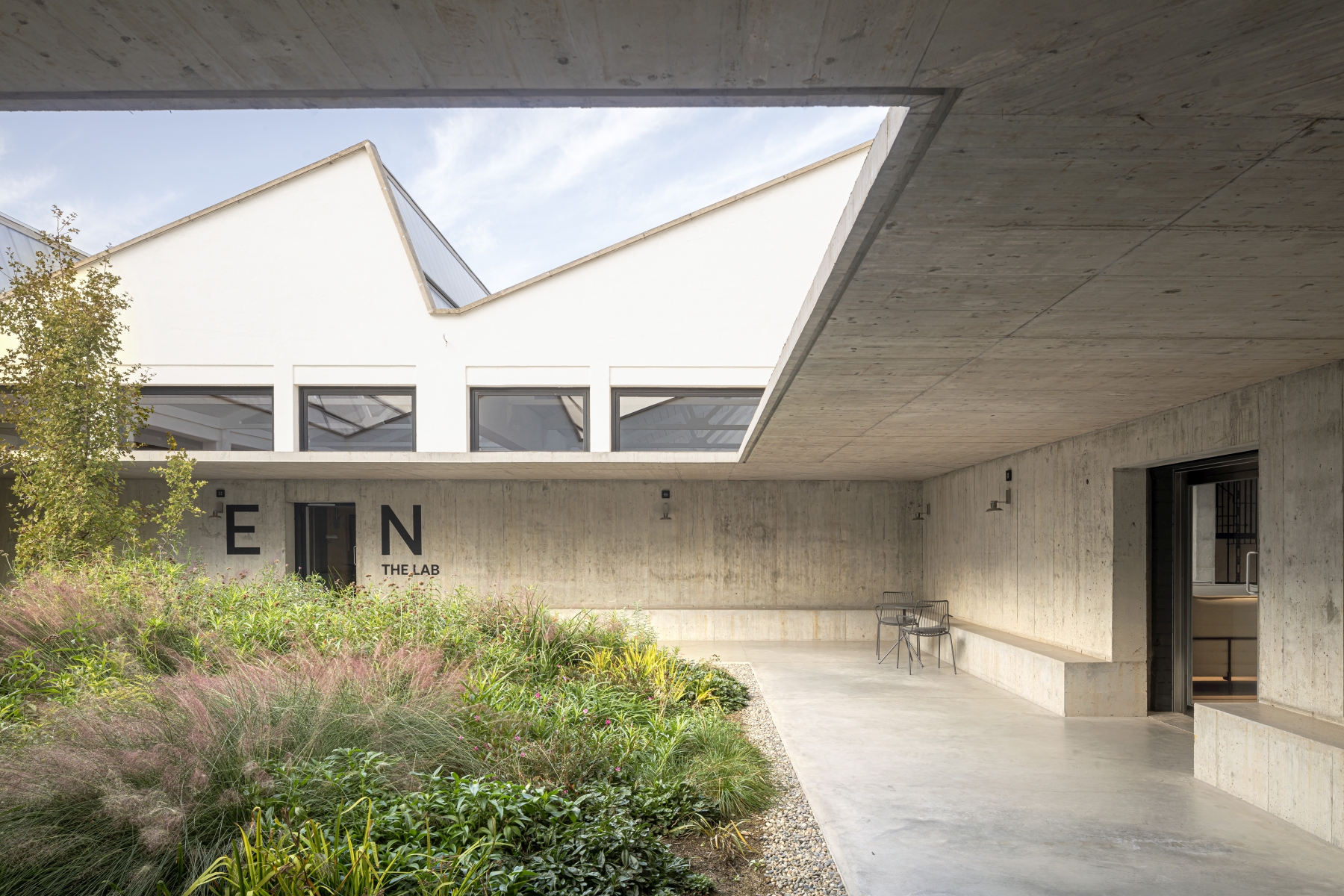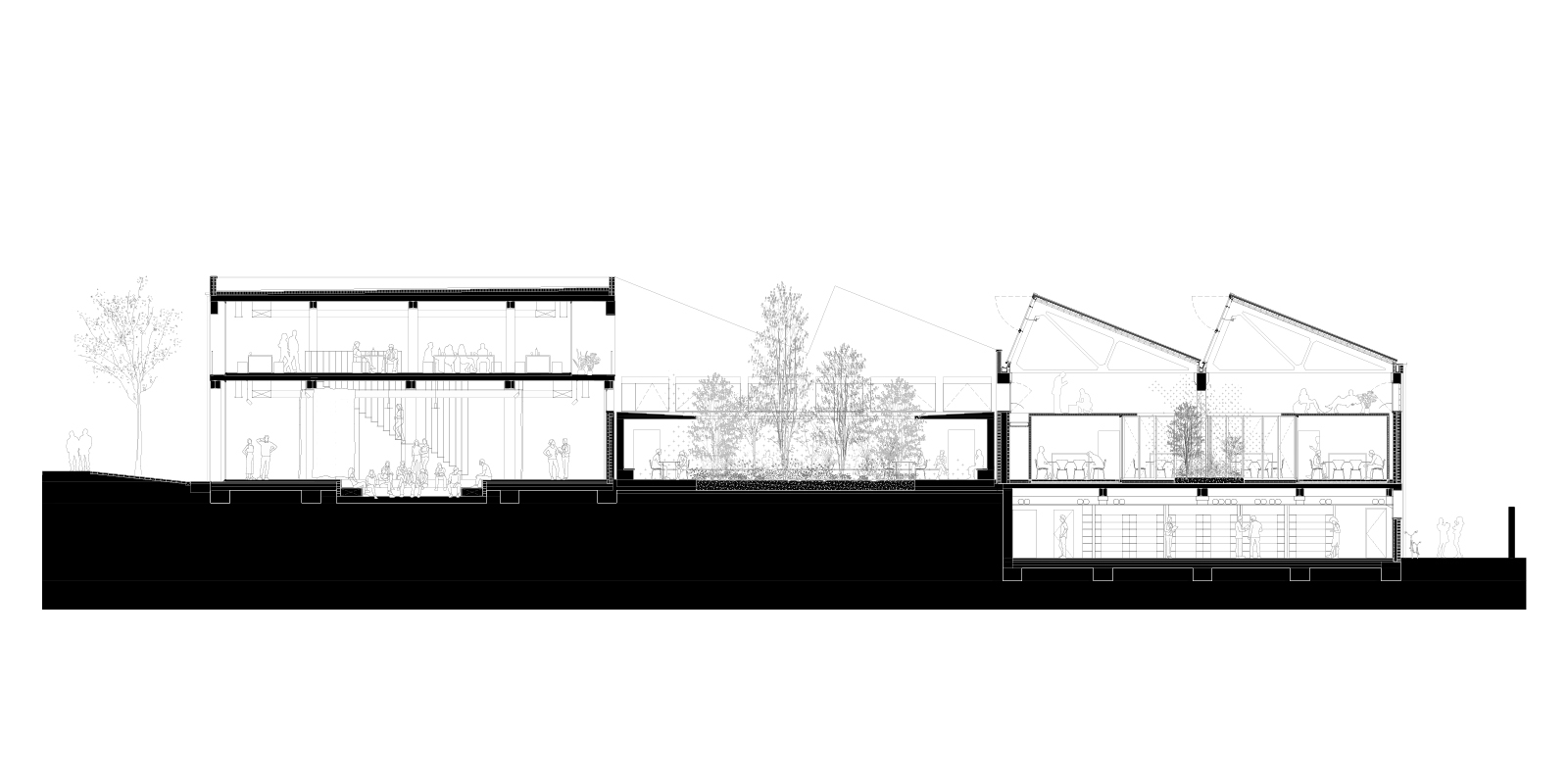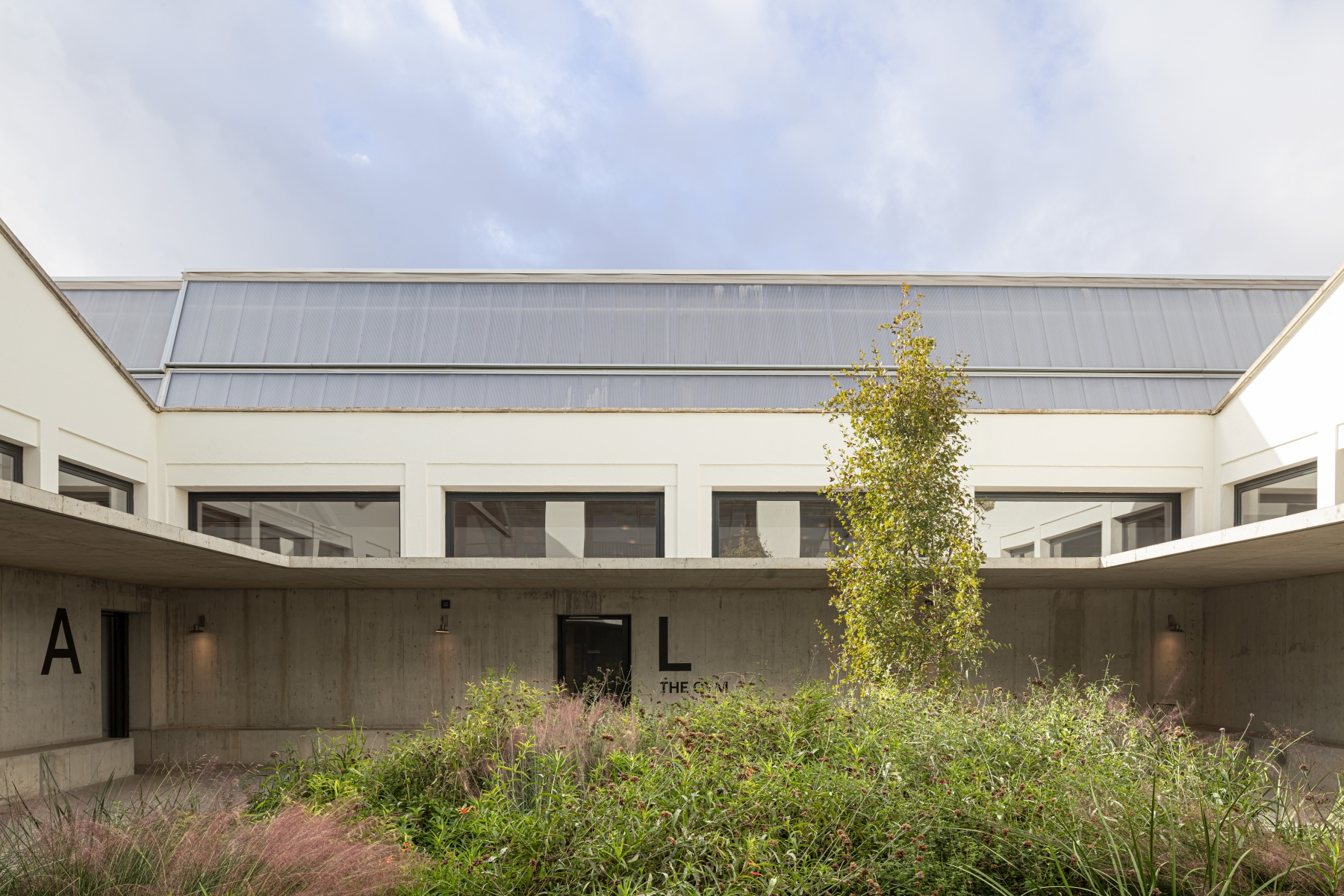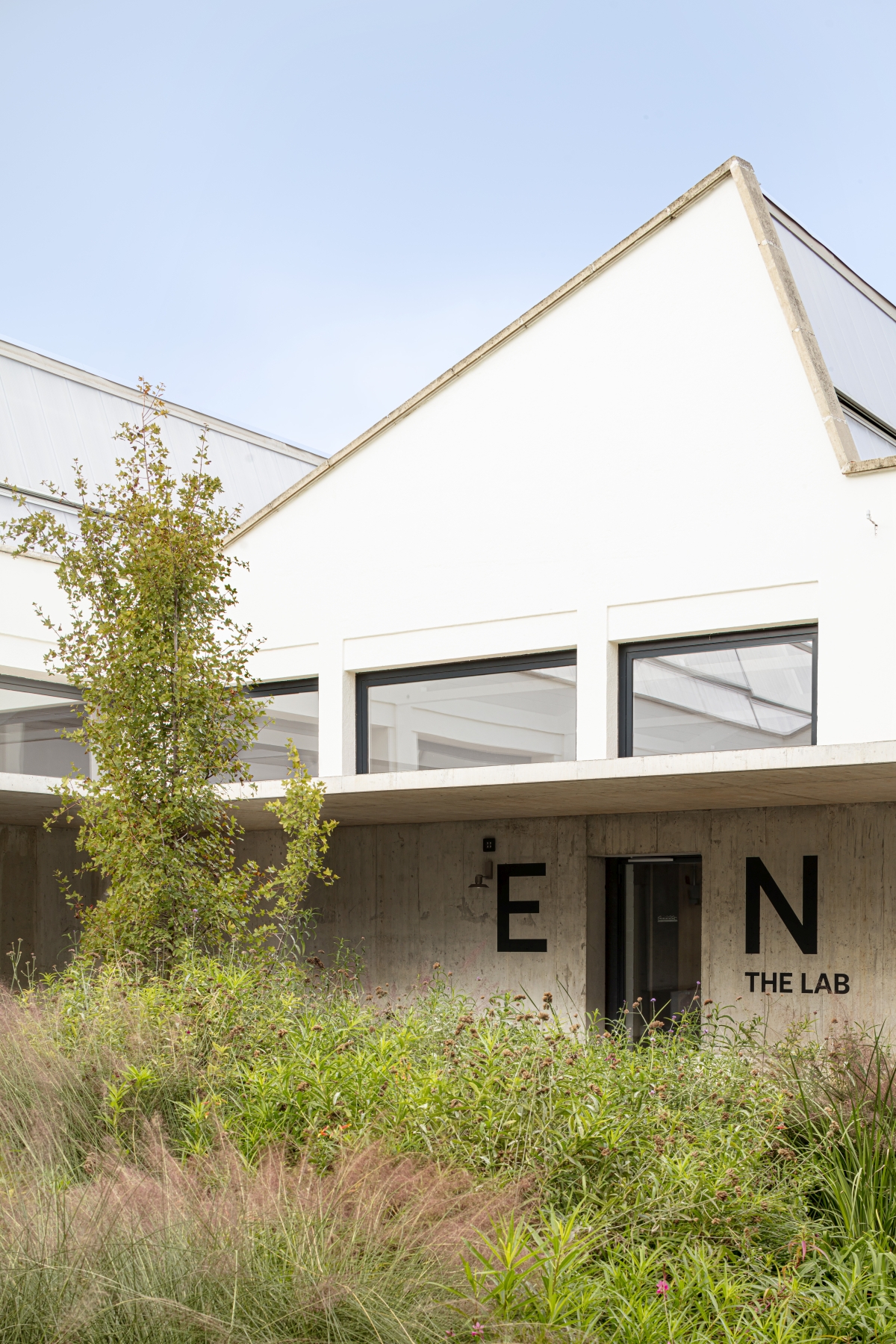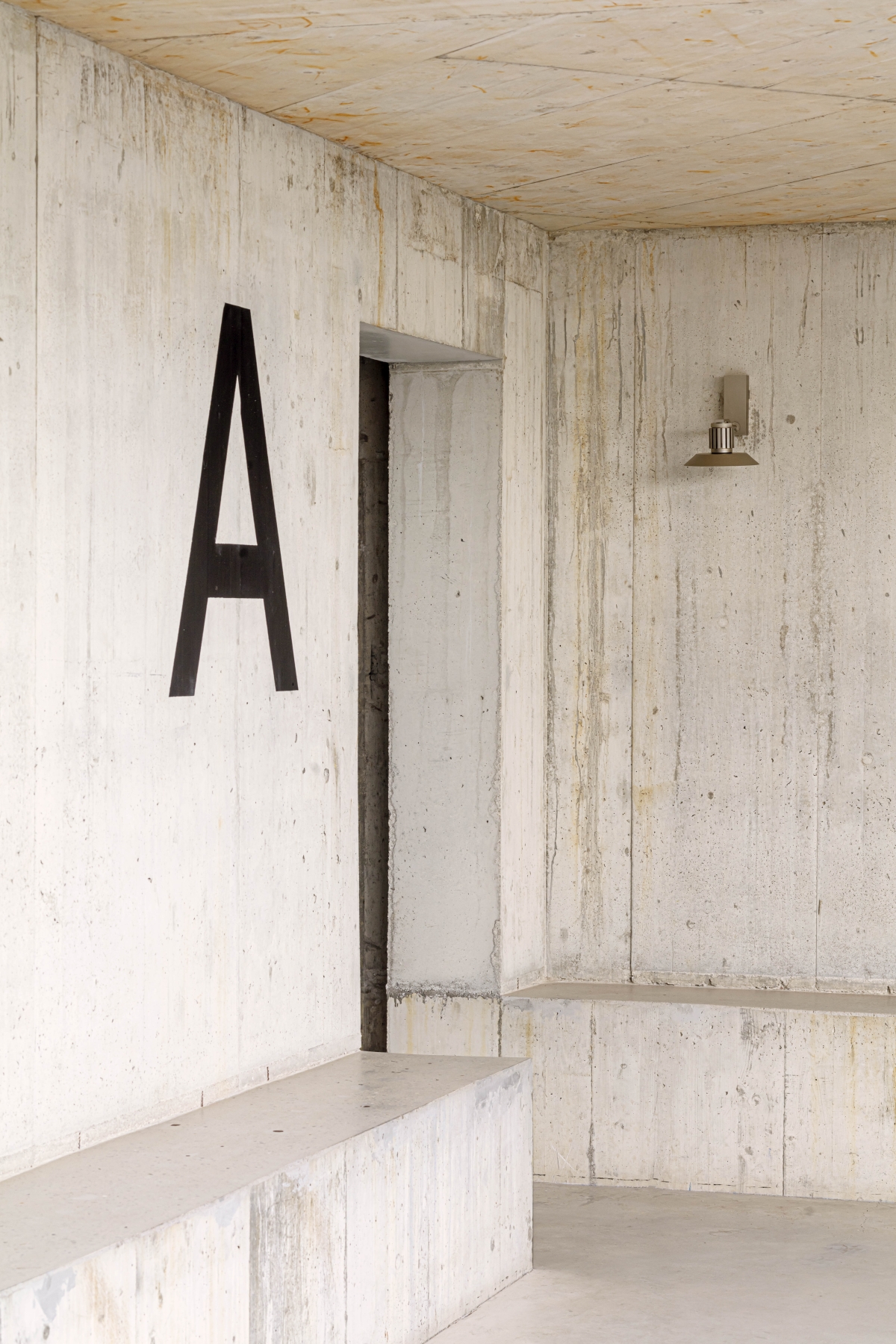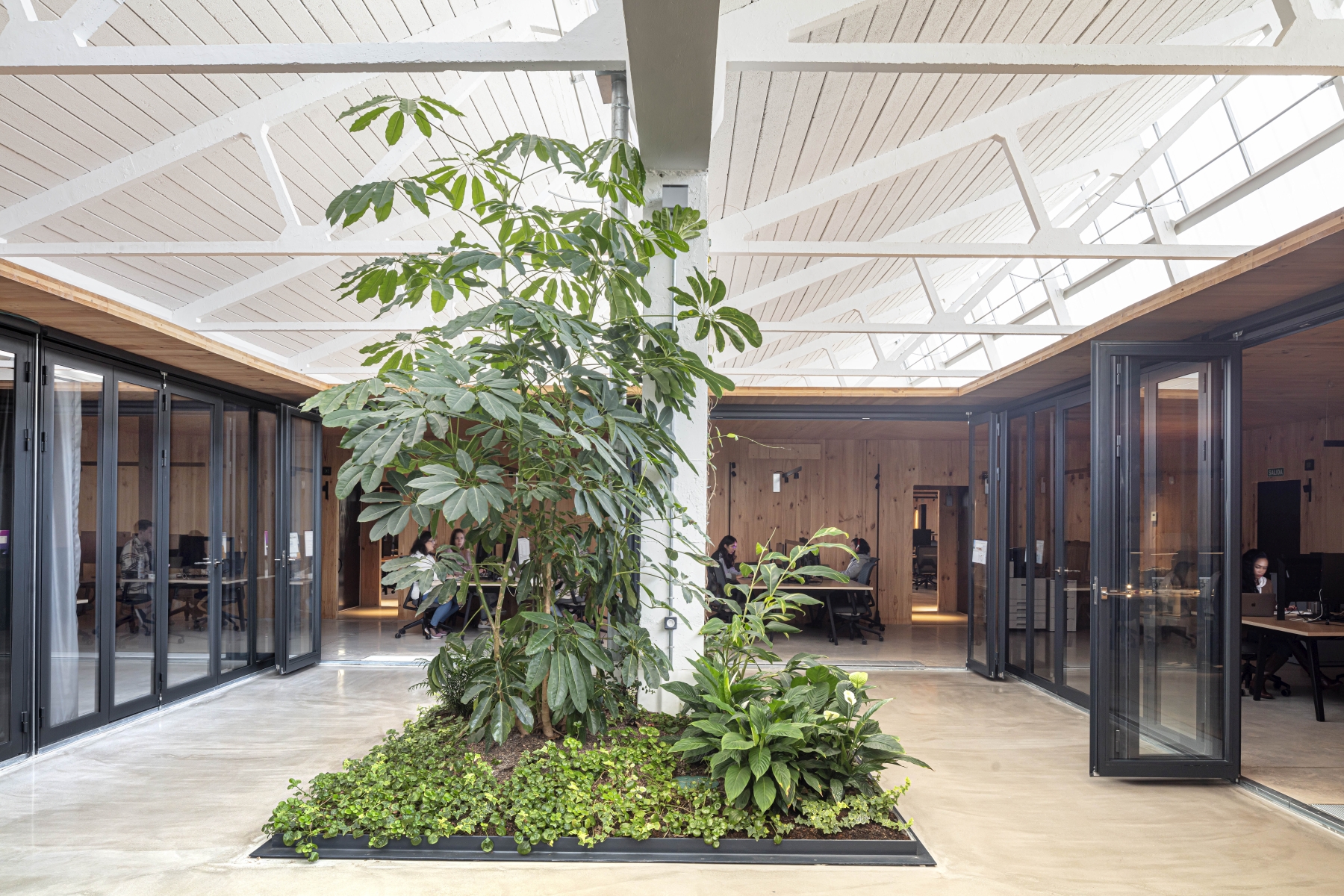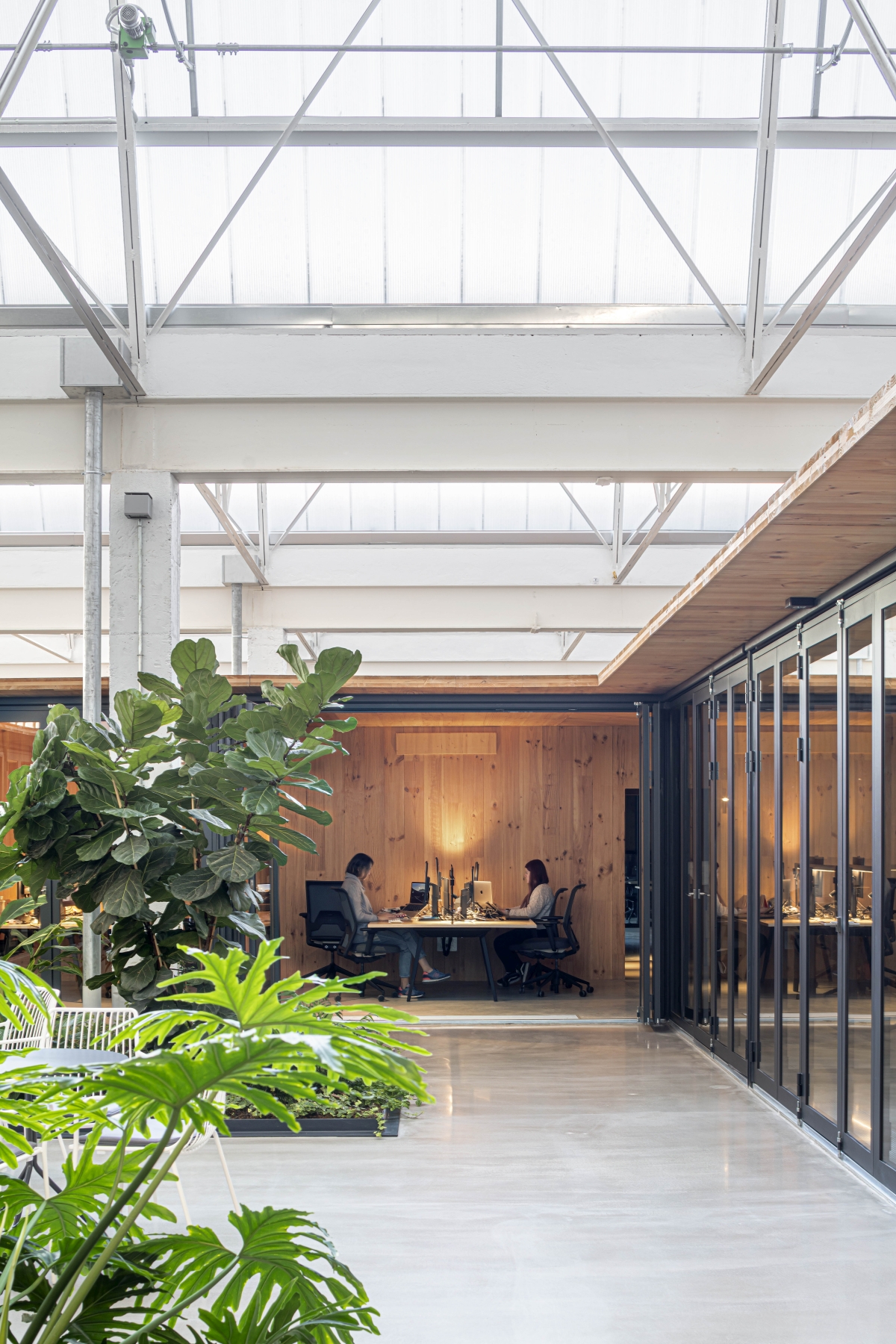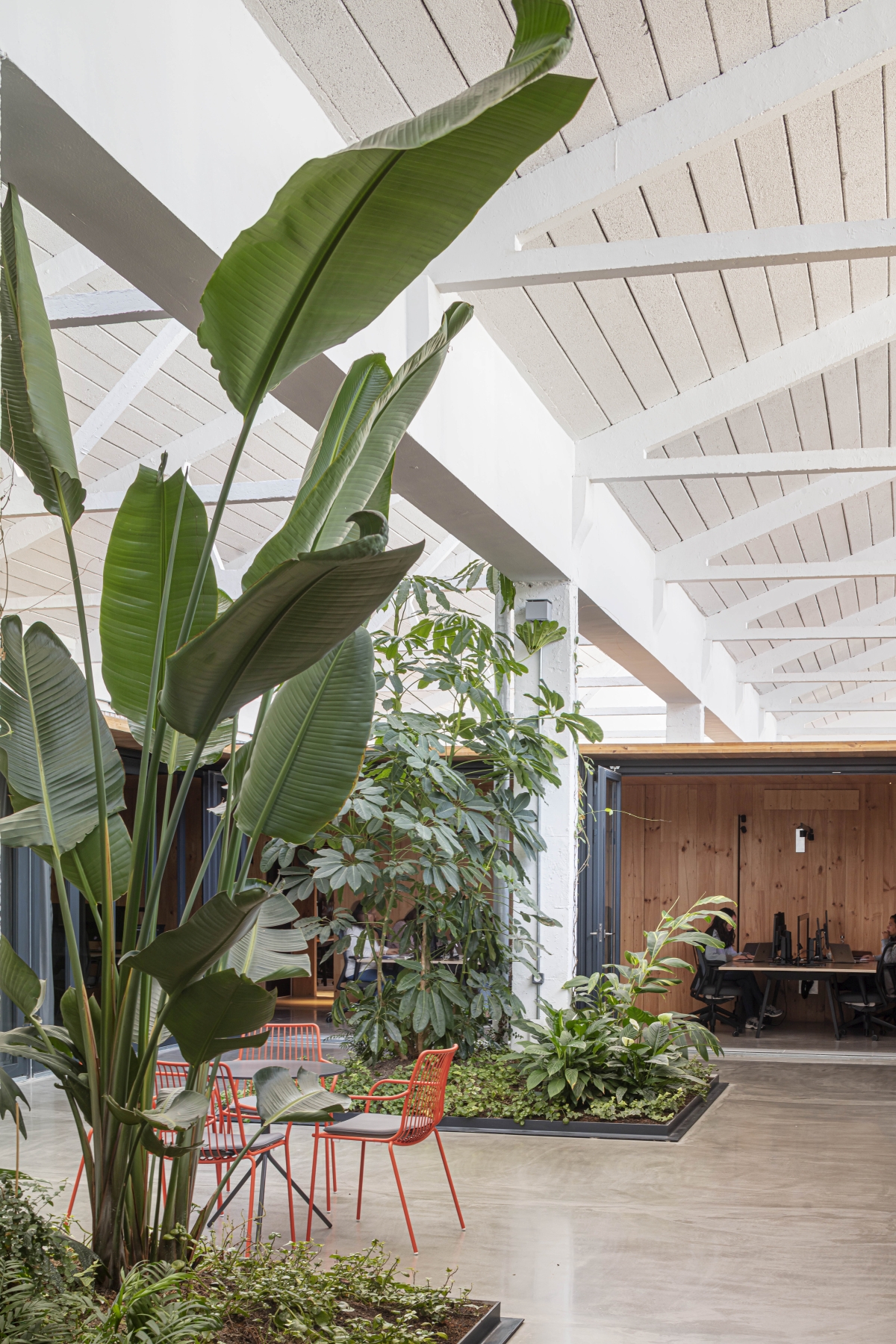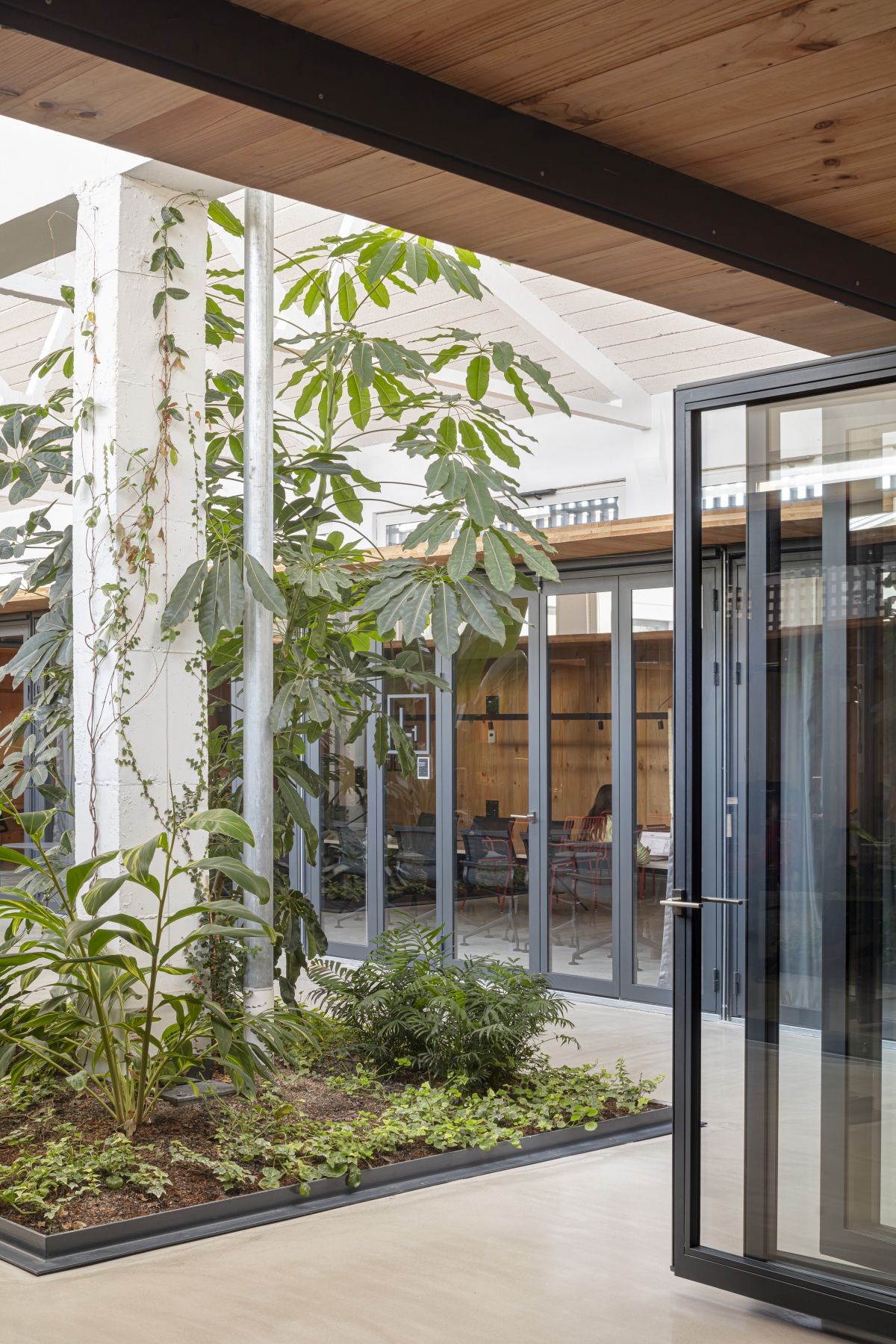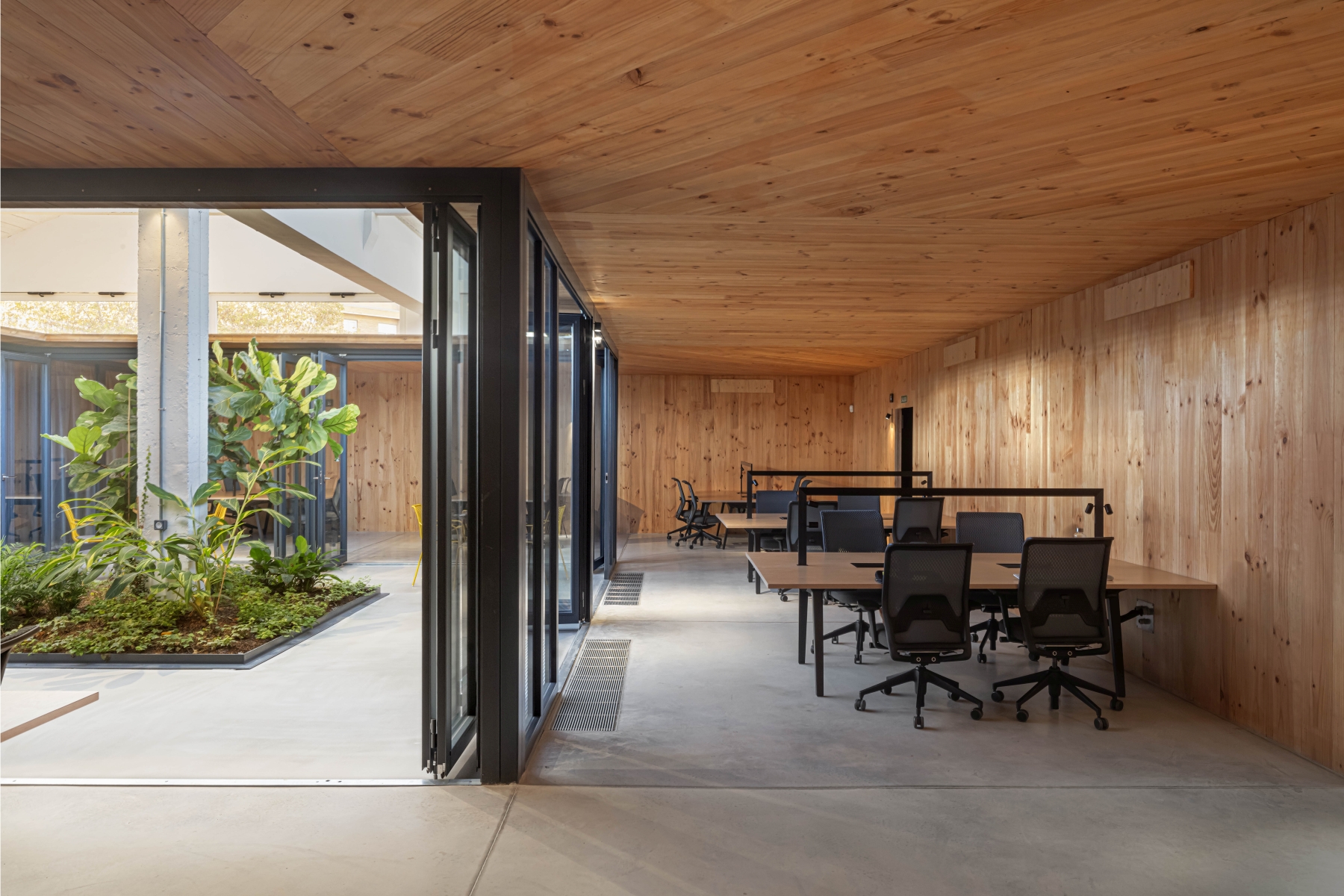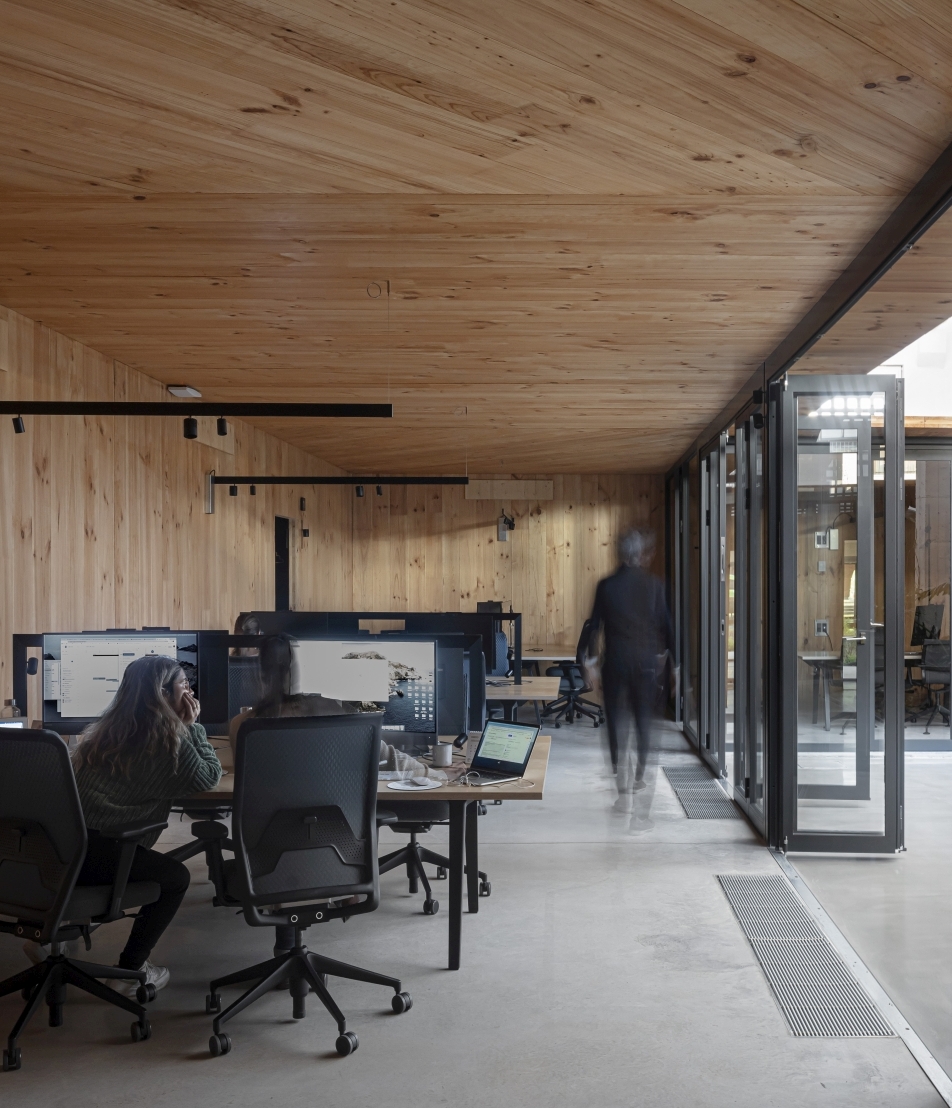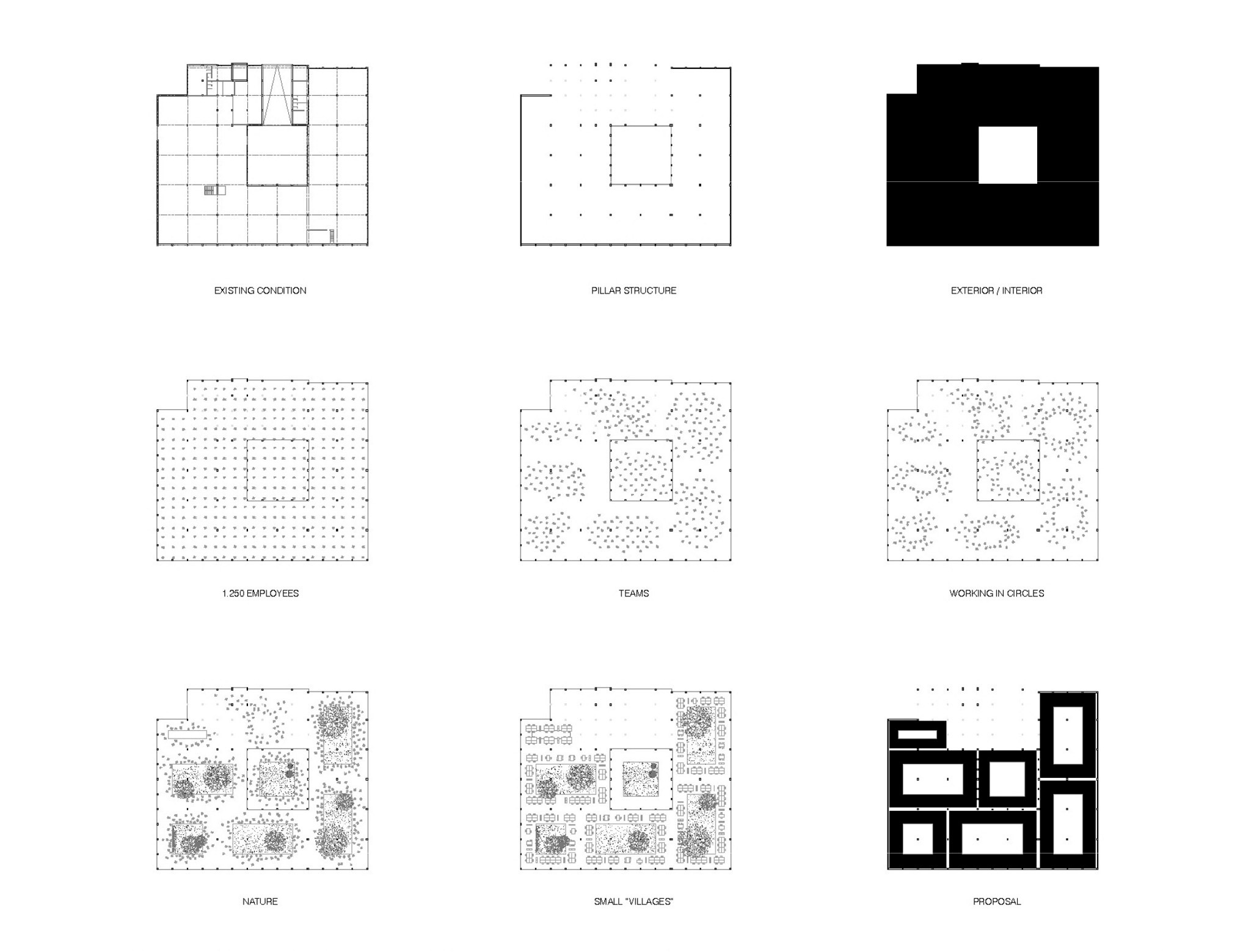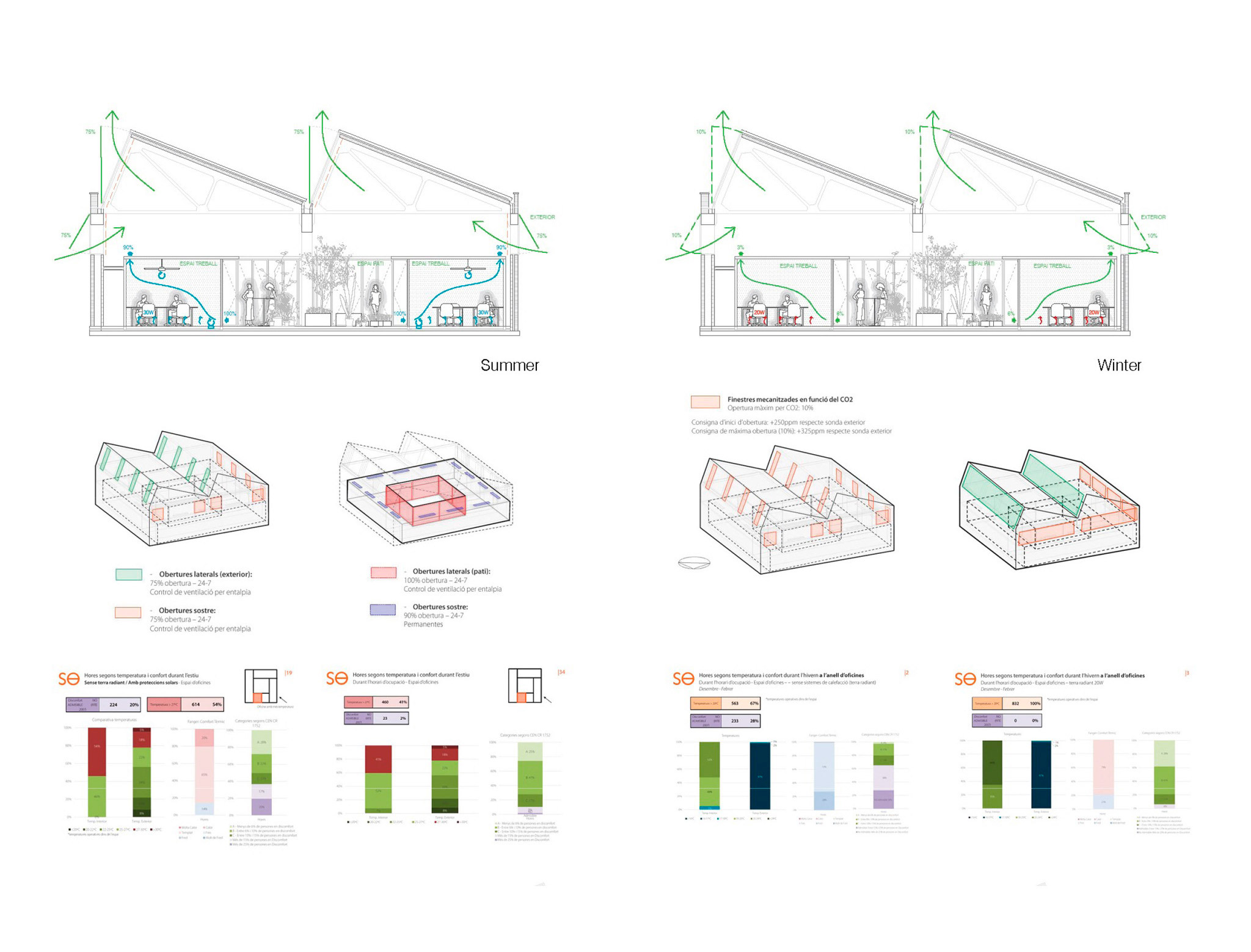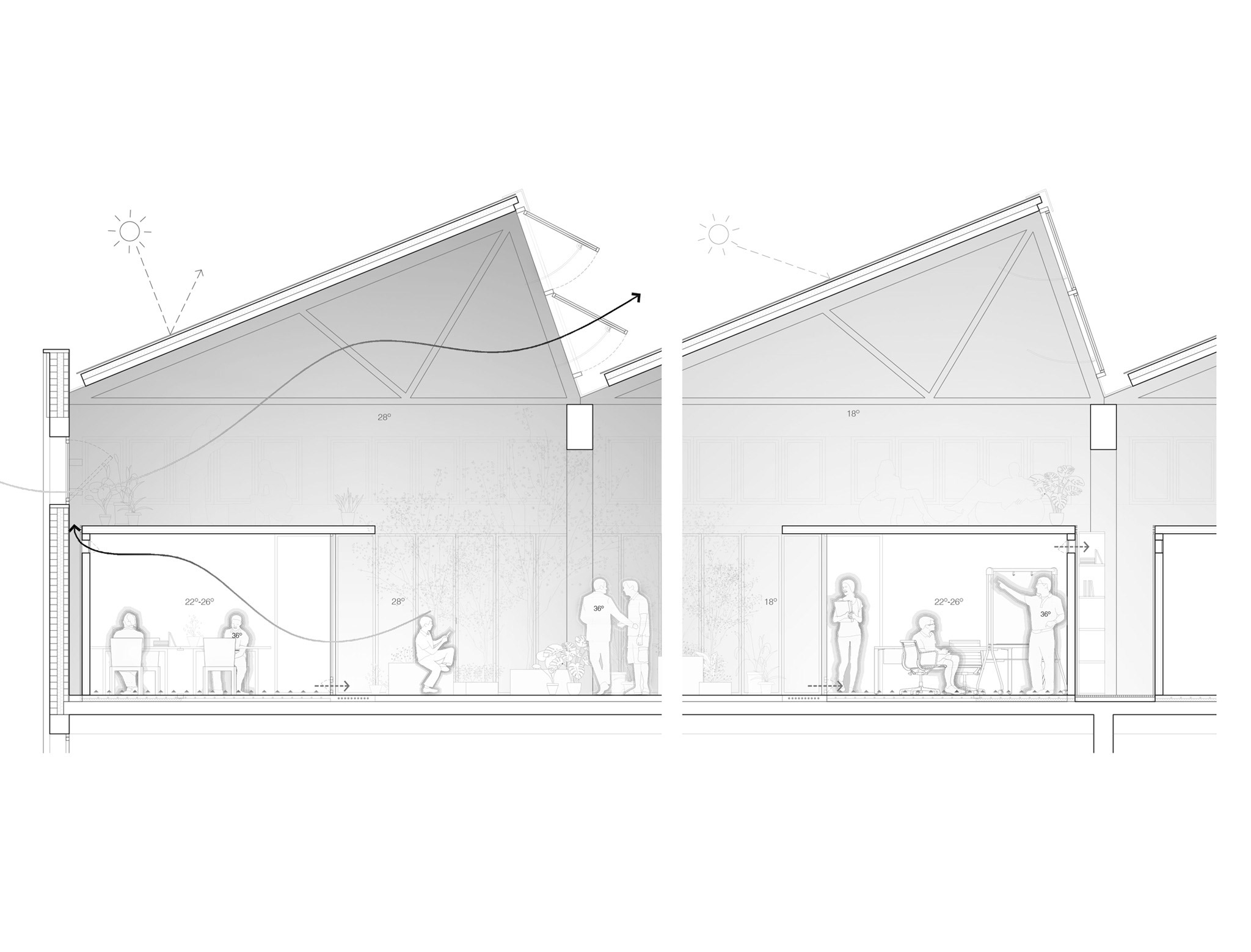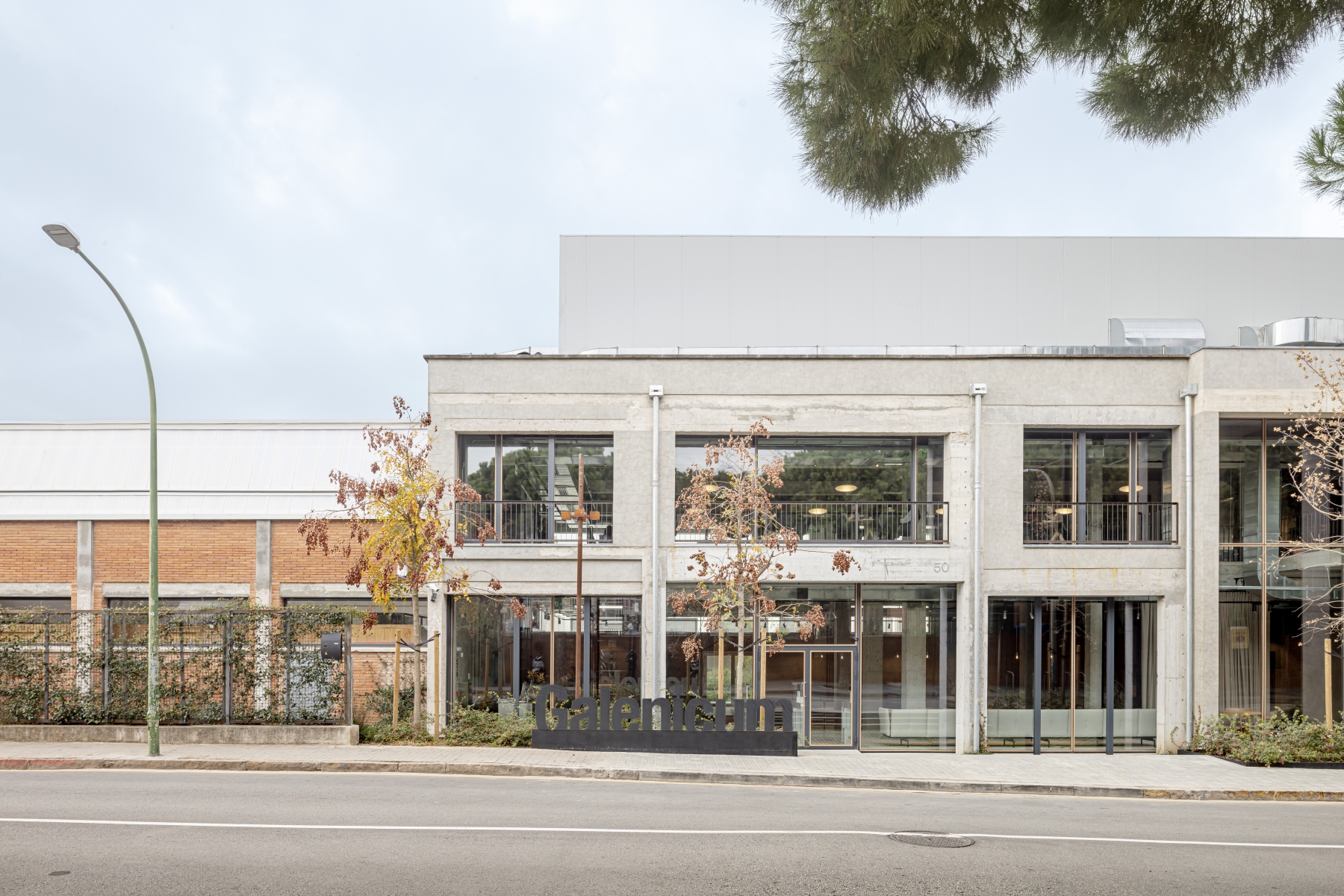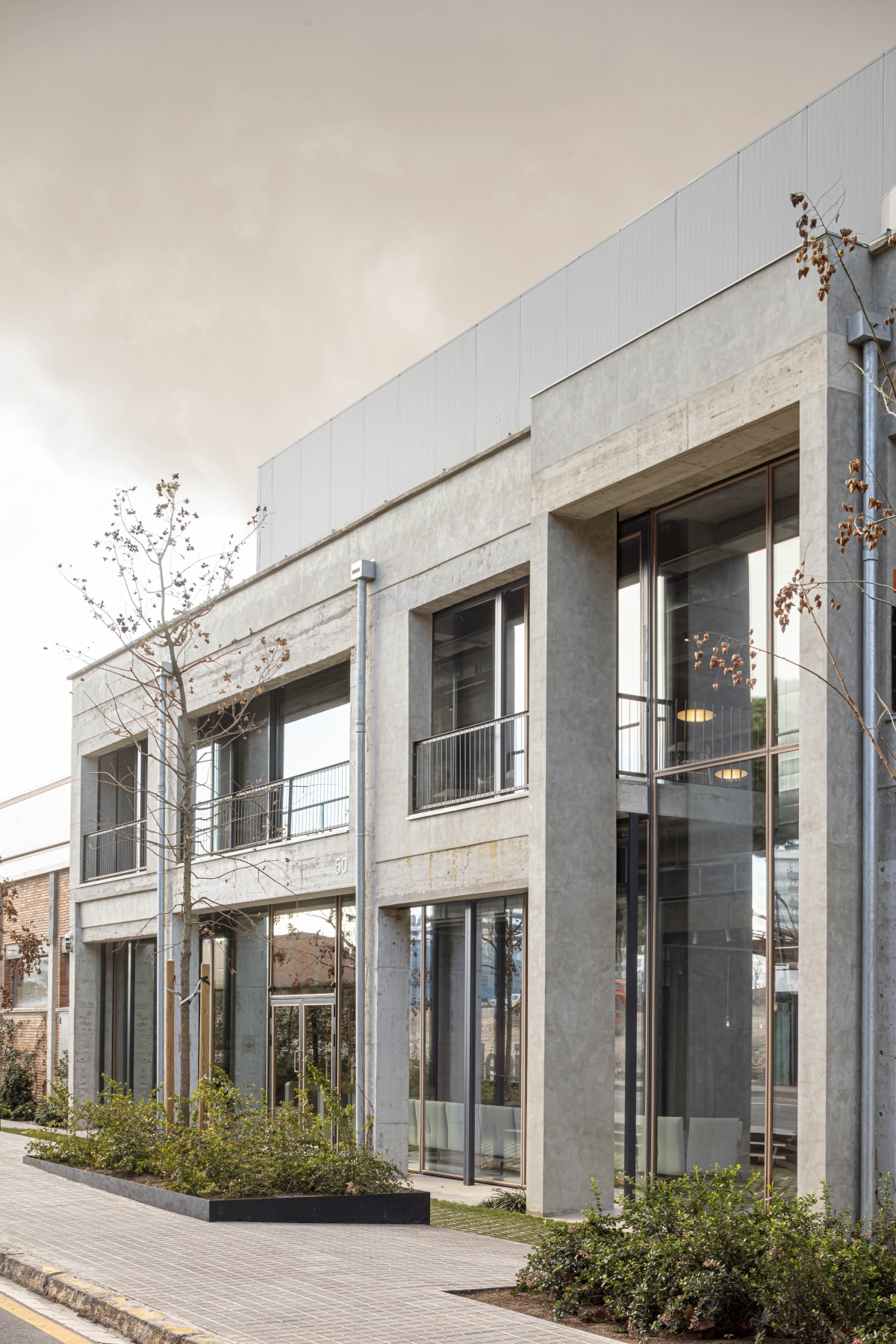This project for a pharmaceutical company’s new offices involves the renovation of an industrial complex in a sector that is now under transformation, with good connections to the city, its metropolitan area and strategic transport infrastructure. The existing building has two parts: a large diaphanous pavilion with a typically industrial structure of pillars, lattice trusses and a north-facing sawtooth roof, and an office block. There is also a central courtyard.
This type of industrial building usually has a lot of space and light but poor shelter from the elements, making it expensive to heat and hard to organise when the nuances of a company with 140 staff members, a dozen departments and major short-to-medium term growth are factored in. For this type of space and brief, the air must be ‘hierarchized’ in a climatic gradient, and work must be well-distributed for organizational and comfort purposes.
Climate control for the whole volume is not viable. The project therefore aims to improve the conditions of the enveloping walls to temper the precinct. This requires a pre-treated primary air renewal process for the active climate in the restricted work zones, a feasible option in these controlled spaces.
In order to distribute the open, undifferentiated floor plan around the courtyard both climatically and spatially, the project includes the client’s desire to organise the different departments in families or ‘tribes’ with different synergies. The proposal calls for these tribes to work in a circle around an unprogrammed space with a strong vegetation-related component. This layout admits the idea of the group, of horizontal relationships between people. It also facilitates the creation of work environments for small numbers of colleagues, leading to less noisy atmospheres. In the centre of the group is the void, a free space where the rest of the activities take place.
We propose a series of cloisters or rings shaped by CLT panels. On the inner side, connected to the green zones, they are completely transparent and passable, while on the outer side, where the work benches are placed, they are totally opaque and filled with services.
The layout of the rings avoids interference with the pre-existing pillars, situated in the courtyards or between the cloisters. This generates a continuum of technical passages containing bathrooms, archives, and stairs to inspect the roofs above the rings. All the climate control equipment, supply and data ducts for the workplaces will run through these technical spaces, without contaminating the interior space with technology.
This set of in-between spaces and courtyards is sheltered from the elements by the original factory walls. To temper this space as much as possible, we will improve the insulation and install pre-treatment for the primary air in winter and ventilation for summer.
The space nearest the north wall in the former office building zone, not occupied by the cloisters, is also proposed as a non-programmed workspace where food-related group leisure, presentations and training activities will take place in a flexible, uncommitted open-plan space. The only specialised aspect of this area will be the kitchen, planned as a hub for this set of activities.
Finally, the central courtyard will be completed with an open cloister and a leafy garden which will act as a large-scale distributor for access to all the work cloisters and the main relaxation zone.
Other projects by Harquitectes
